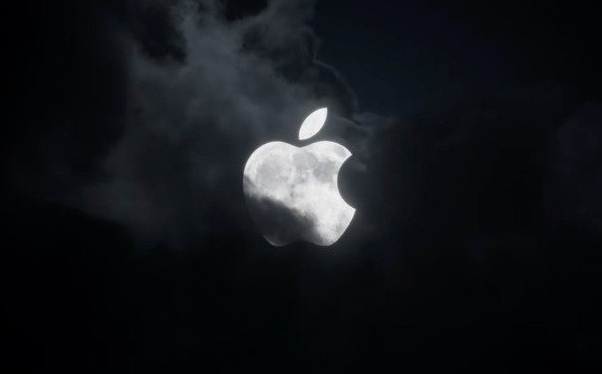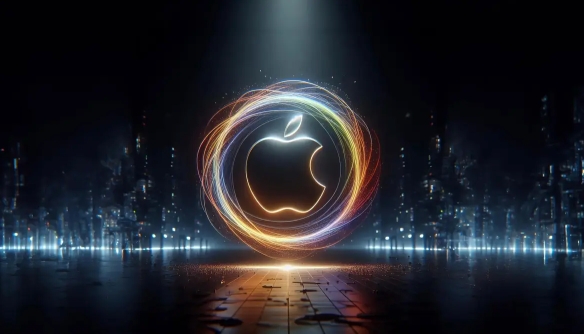 Computer Tutorials
Computer Tutorials
 System Installation
System Installation
 What is the difference between macOS Recovery and Internet Recovery?
What is the difference between macOS Recovery and Internet Recovery?
What is the difference between macOS Recovery and Internet Recovery?
Jul 02, 2025 am 12:24 AMmacOS Recovery is a built-in recovery system on a hidden partition of your Mac’s startup disk, providing tools like Disk Utility, Terminal, and macOS reinstallation. 1. It loads quickly from local storage. 2. Requires a functioning internal drive. 3. Tools include reinstalling macOS, repairing disks, and restoring from Time Machine. Internet Recovery is an alternative that downloads a minimal recovery system from Apple’s servers. 1. Accessed via Option + Command + R. 2. Requires internet but works without a local Recovery partition. 3. Ideal for erased or unbootable drives. Use macOS Recovery for fast solutions when the drive is intact, and Internet Recovery when the local Recovery partition is missing or damaged.

If you've ever needed to reinstall macOS or troubleshoot a serious issue on your Mac, you might have heard the terms "macOS Recovery" and "Internet Recovery." They sound similar, but there are important differences between the two. Here's what you need to know.

What is macOS Recovery?
macOS Recovery is a built-in recovery system that lives on a hidden partition of your Mac’s startup disk. It includes essential tools like Disk Utility, Terminal, and the ability to reinstall macOS. To access it, you restart your Mac and hold down Command + R (or just power it on and immediately hold those keys).

This mode is fast because everything it needs is already on your drive. But if that partition gets erased or corrupted — or if your internal drive fails — you won’t be able to use it.
Some key features:

- Comes preinstalled on your Mac
- Loads quickly from local storage
- Tools include:
- Reinstall macOS
- Disk Utility
- Time Machine restore
- Terminal
What is Internet Recovery?
Internet Recovery is like a backup plan for when macOS Recovery isn't available. Instead of loading tools from your hard drive, your Mac connects to Apple’s servers and downloads a minimal version of the recovery system over the internet.
To enter Internet Recovery, you reboot and hold Option + Command + R. It takes longer to start up since it has to download data, but it doesn’t rely on your internal drive at all.
It’s especially useful if:
- Your startup disk has been erased
- The Recovery partition is missing or damaged
- You're troubleshooting a completely blank Mac
Keep in mind: you’ll need a stable internet connection, and depending on your location and Apple’s server load, it might take several minutes to load.
When to Use Each Mode
Choosing between macOS Recovery and Internet Recovery usually comes down to your situation:
Use macOS Recovery if:
- You just want to reinstall macOS quickly
- Your internal drive is working fine
- You’re trying to restore from a Time Machine backup
- You need to fix disk issues with Disk Utility
Use Internet Recovery if:
- Your Recovery partition is missing or broken
- You're dealing with a wiped or failed drive
- You're setting up a used Mac that came without a Recovery partition
In most cases, macOS Recovery is faster and more convenient. But Internet Recovery gives you a fallback even when your local disk is unbootable.
A Few Things to Keep in Mind
- Not all Macs support Internet Recovery — it works on models from late 2009 or newer (Intel-based), and all Apple Silicon Macs.
- If you're using a Mac with Apple’s M1 chip or later, Internet Recovery looks a bit different — it boots into a Finder-like interface called "RecoveryOS."
- You can't customize Internet Recovery; it always pulls the OS version tied to your Mac model.
- On older Intel Macs, Internet Recovery may install an older version of macOS than what was last installed on the machine.
So, basically, macOS Recovery is your go-to tool for quick fixes and reinstallations, while Internet Recovery is the safety net when things go wrong with your drive. Either way, both help get your Mac back on track when something goes sideways.
That's about it — not too complicated, but definitely handy to understand before you're stuck needing one of them.
The above is the detailed content of What is the difference between macOS Recovery and Internet Recovery?. For more information, please follow other related articles on the PHP Chinese website!

Hot AI Tools

Undress AI Tool
Undress images for free

Undresser.AI Undress
AI-powered app for creating realistic nude photos

AI Clothes Remover
Online AI tool for removing clothes from photos.

Clothoff.io
AI clothes remover

Video Face Swap
Swap faces in any video effortlessly with our completely free AI face swap tool!

Hot Article

Hot Tools

Notepad++7.3.1
Easy-to-use and free code editor

SublimeText3 Chinese version
Chinese version, very easy to use

Zend Studio 13.0.1
Powerful PHP integrated development environment

Dreamweaver CS6
Visual web development tools

SublimeText3 Mac version
God-level code editing software (SublimeText3)

Hot Topics
 What is the difference between macOS Recovery and Internet Recovery?
Jul 02, 2025 am 12:24 AM
What is the difference between macOS Recovery and Internet Recovery?
Jul 02, 2025 am 12:24 AM
macOSRecoveryisabuilt-inrecoverysystemonahiddenpartitionofyourMac’sstartupdisk,providingtoolslikeDiskUtility,Terminal,andmacOSreinstallation.1.Itloadsquicklyfromlocalstorage.2.Requiresafunctioninginternaldrive.3.ToolsincludereinstallingmacOS,repairin
 Can I use my Windows 7 product key to activate a new Windows 10 installation
Jul 02, 2025 am 12:15 AM
Can I use my Windows 7 product key to activate a new Windows 10 installation
Jul 02, 2025 am 12:15 AM
No,youcannotdirectlyuseaWindows7productkeytoactivateWindows10.1.Windowsproductkeysareversion-specific,soaWindows7keyonlyworksforWindows7.2.IfyourPCwasupgradedfromWindows7toWindows10beforesupportended,itmayhaveadigitallicenselinkedtothehardware,allowi
 Minimum system requirements for Windows 11
Jul 03, 2025 am 12:48 AM
Minimum system requirements for Windows 11
Jul 03, 2025 am 12:48 AM
The minimum hardware requirements of Windows 11 mainly include five aspects: 1. The processor must be from the sixth-generation Intel or Ryzen starting point or above, supports 64-bit, dual-core and above, the main frequency is not less than 1GHz, and is on the Microsoft support list; 2. At least 4GB of memory, but 8GB or higher is recommended to ensure smooth use; 3. At least 64GB of storage space, the system itself occupies about 25~30GB, and it is recommended to use SSD; 4. The TPM2.0 security module must be supported and enabled, many motherboards did not meet this condition before 2016; 5. Some users try to bypass the restricted installation may cause driver or update problems, and ordinary users do not recommend this.
 This copy of the Install macOS application is damaged
Jul 06, 2025 am 12:26 AM
This copy of the Install macOS application is damaged
Jul 06, 2025 am 12:26 AM
The "InstallmacOS is corrupted" prompt is usually caused by security mechanisms rather than file corruption. Common reasons include unofficial download sources, incomplete files, failure to verify signatures in the old system, or misjudgment of Gatekeeper; solutions include: 1. Forced opening of the installer through terminal commands and starting the USB flash drive; 2. Temporarily closing Gatekeeper verification; 3. Remount the installer and delete kernelcache file repair permissions; ways to avoid problems include prioritizing the use of official channels to download, verify the SHA256 value, selecting a trusted third-party site, and avoiding modification of the installation content.
 How to convert MBR to GPT for Windows 11 installation
Jul 05, 2025 am 12:39 AM
How to convert MBR to GPT for Windows 11 installation
Jul 05, 2025 am 12:39 AM
To convert the hard disk from MBR to GPT to install Windows 11, you must first back up the data and confirm that the motherboard supports UEFI; 1. Automatic conversion using Windows installation media: Insert the USB disk and boot from USB, press Shift F10 on the installation interface to open the command prompt, enter diskpart, listdisk, selectdiskX, clean, convertgpt commands to complete the conversion. This method will clear all contents of the disk; 2. Lossless conversion of non-system disks in existing Windows: Use AOMEIPartitionAssistantStandard and other tools to right-click to convert to GPT disk. It is still recommended to backup data before operation;
 Windows 10 installation stuck on logo
Jul 06, 2025 am 12:01 AM
Windows 10 installation stuck on logo
Jul 06, 2025 am 12:01 AM
When booting the computer and logging in the Windows 10Logo interface is usually not damaged by hardware, but rather an error in system file loading. 1. Wait for 15 to 30 minutes first to confirm whether it is "fake death". If there is no progress, force restart; 2. Force shut down three times to enter the recovery environment, try to start repair or enter safe mode to troubleshoot driver and software conflicts; 3. Check the hard disk bad channel, clean the memory gold fingers and replace the slot to test the hardware problems; 4. Finally, you can try to reset the computer or install the system in a brand new way to solve it, and give priority to using the official website pure ISO mirror.
 How to check if Windows is activated and genuine
Jul 09, 2025 am 12:54 AM
How to check if Windows is activated and genuine
Jul 09, 2025 am 12:54 AM
1. Check the activation status in the settings; 2. Use the command prompt to check the activation status; 3. Check whether there are watermarks or restrictions; 4. Verify whether the system is genuine. To confirm whether Windows is genuine and activated, first open "Settings" → "System" → "About" → "Activate" to view the status, and it is normal to display "Windows is activated"; secondly, you can run the commands wmic and slmgr with administrator permissions to view the license details; if the desktop has a "Activate Windows" watermark, it means that it is not activated; finally, use "Windows Specifications" to confirm that the system type is retail or OEM version, and use Microsoft's official tools to verify the authenticity of the system.
 How to install Windows on a second monitor setup
Jul 17, 2025 am 02:42 AM
How to install Windows on a second monitor setup
Jul 17, 2025 am 02:42 AM
Connecting a second monitor when installing a Windows system will not affect the installation process, but the following things need to be paid attention to to ensure that the dual screens work normally: 1. There may be only one screen display during the installation process, and the main display device in the BIOS can be adjusted or the interface can be replaced; 2. After the installation is completed, select the display mode through Win P, and adjust the resolution, position and main display in the display settings; 3. If there is a black screen or unrecognizable situation, check the cable, update the driver or enter safe mode to reinstall the driver; 4. When using monitors with different resolutions, set the appropriate zoom ratio and enable the zoom repair option to optimize the display effect.





